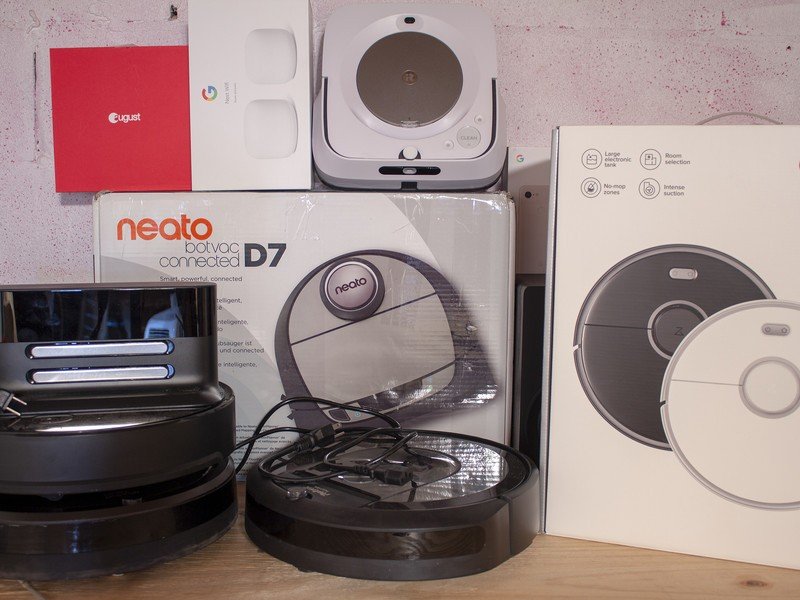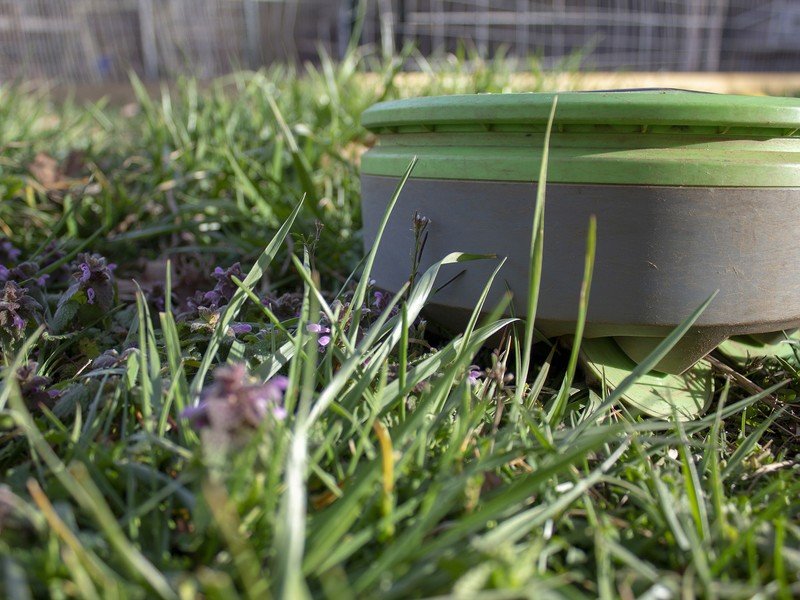Robots are slowly taking over our daily chores, and it's about friggin time

Nobody wants to vacuum. Nobody wants to wash the dishes, fold the laundry, or dust the furniture. But it's got to be done, so what do we do about it? You could pay someone to do it professionally, or maybe have your kids do a mediocre job (mainly because they don't really care about the house being clean in the first place), but neither of those options are ideal for many reasons.
Ever since The Jetsons aired in the early 1960s, people have been dreaming about having a robot housemaid that would do their menial chores so that they have more time for the fun things in life without sacrificing the importance of a clean house.
So if we've been dreaming about this for decades, what in the world took so long? Two big things, namely: technology, and societal acceptance.
Slow progression

While significant progress has been made regarding robots just in the last 10 years alone, there's still a substantial amount of work that has to be put into all the adjoining systems required for robots to operate in a meaningful way. As humans, we tend to oversimplify problems because we take our automation for granted.
Our brains do a lot that we're completely unaware of, whether that's collecting and storing data, analyzing the environment around us, pumping blood and oxygen through our bodies throughout the day, or just moving our hands and feet. Many of those actions "just happen" and, many times, people don't consider the massive number of subsystems and analytics routines we would need to build into a robot for it to even function at a fraction of the complexity of the human body.
Even ignoring all the other pieces of the puzzle that are required for a robot to be truly useful in a human's life, the dexterity and physical movement required to complete many menial, daily tasks is astounding as well. We recently saw an announcement from iRobot regarding the future of household robots and several advancements the company is looking forward to in just the next five years. At least one of these robots is said to be able to wash the dishes and fold the laundry, meaning iRobot has some pretty interesting arm tech up its sleeve.
As it stands, the best home robot tech is, ostensibly, robot vacuums, but mainly because that's the only real consumer home robot tech available.
We've also seen some incredible advancements from Google, a company that regularly excels at making software do incredible things despite the hardware it's running on. Just this week, Google unveiled a robot that was able to teach itself to walk in a mere two hours from its "birth." While we've seen robots that can walk before, this was a milestone in computer learning that acts more like a living creature and understands the concept of basic physics and movement; an important trait that's needed for the advancement we're looking for.
Get the latest news from Android Central, your trusted companion in the world of Android
As it stands, the best home robot tech is, ostensibly, robot vacuums, but mainly because that's the only real consumer home robot tech available. Almost all other home robots are relegated to teaching programming to kids; a job that's equally as important as washing your dishes, but one that takes far more effort to enjoy than many would like to think about.
Aside from physically and mentally capable robots, we need robots to be as easy, or easier to use, than modern robot vacuums. With robot vacuums, it's usually pretty clear what you need to pick up or move around in order to get a successful cleaning from them, but what if you didn't have to do this at all? What if a robot vacuum understood what was happening around it enough so that it could truly avoid obstacles like wires, dirty socks in the middle of the floor, and that shiny new Lego collection your son left lying about?
Blurry vision

That's where the concept of vision and understanding come in. Again, another amazing trait of the brain that many of us simply take for granted. When you look at a red apple and can differentiate it from a red tomato, you don't normally stop to consider how or why this happens. You just know that you want a sweet apple and not a savory tomato.
In the robot vacuum world, there's been an argument over the past handful of years regarding which type of computer-aided vision is best. Are cameras the way to go, or are laser-based solutions like LIDAR the way to go? If we've learned anything from self-driving cars, it's the combination of the two that really creates the best overall scenario because it provides so many different sensory inputs that can help track the world around the robot.
While it's not necessary to get into the weeds regarding how these types of technology work and what the advantages of each are, know that the importance of spatial awareness and environmental identification and understanding are paramount to getting more useful robots in our lives. That doesn't mean every robot in the future needs to have massive computational power and hands to get the job done. Take a cue from Star Wars to see that robots of all kinds can be around at the same time and tailor-built for specific jobs.
They key to being more environmentally-friendly

Over the last several decades, our society has developed an unhealthy relationship with chemicals. Whether it's applying chemical pesticides and herbicides that have created an unhealthy ecosystem in our oceans and lakes, or unknowingly introducing cancer-causing chemicals into our daily lives, harmful chemicals have become omnipresent. Many of these choices were made because they made our lives easier or enabled us to operate more efficiently (agriculture, in particular).
Robots are the key to undoing the damage we've done for the sake of convenience.
But it doesn't have to be that way, and robots are the key to undoing the damage we've done for the sake of convenience. In fact, many farms have begun adopting robots into their daily workflow to better understand how much fertilizer needs to be used and what types of crops respond better to certain types of fertilizers.
At home, robots like Tertill can be used to keep gardens weed-free without having to use herbicides like Roundup. Robot vacuums and mops can be used regularly to keep your home cleaner and prevent your family from getting sick. The point is that automation isn't about being lazy, it's about improving the health and well-being of people everywhere, and robots are the key to doing that.
No one wants the apocalypse

When you think of the concept of "the end of society as we know it," what are the first things that come to mind? It's likely that movies like The Matrix or Terminator immediately pop into your brain, as they've made such a strong impact on consumers at every level. After all, it's "fun" to imagine a scenario where we have adversaries that are as tough or even more powerful than us. Being at the top of the food chain can be a bit boring.
Aside from shifting our paradigm of seeing automation as something more than simply "being lazy" is a paradigm shift required to build trust that robots aren't going to turn against us. The fear of robots seems to stem mainly from Sci-Fi books and movies, which often paint a less-than-rosy picture of robot sentience and how their desire to eliminate us becomes priority number one. But just as chemical use can trend downward with the use of robots, familiarity can cause fear to trend downward as well.
The other big fear we'll need to overcome is the loss of jobs because a more efficient robot took over. We saw this happen in the automotive industry, it's going to eventually happen in the cross-country trucking industry, and it's likely to happen to Uber and Lyft drivers everywhere as well. It sounds depressing, but it's important to look at the bright side of things.
Robots should be a way to make our lives better and safer, not lazier and less meaningful.
Many of the jobs robots have been taking over are either low-paying jobs or jobs known to cause injuries over long periods of time (like manufacturing). The World Health Organization highlighted some statistics way back in 2013 showing that over 1 million people die every year from car crashes, and millions more are injured in significant or permanent ways every year. If automated robotic cars can significantly reduce these statistics and keep more people alive every year, we can find ways to employ those people who might have lost their jobs in the process.
While I'm not looking to put people out of work, it's about high time we have more robots in our lives. Having a dish-washing robot might sound lazy, but it would mean people wouldn't constantly be buying paper plates and plasticware that takes up space in landfills. Automated cars might be off-putting for some people, but it ultimately means saving lives and improving travel for millions. Robots are our friends, and having lots of them is a great thing
Just, please, stop developing robots that can "feel" like humans. That will truly bring about the apocalypse.

